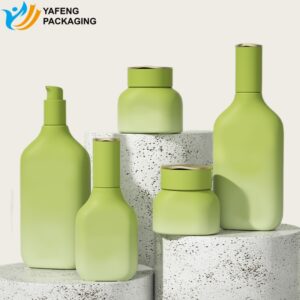
Nachrichten & Blog
Großartige Leistungen in der Wirtschaft werden nie von einer einzelnen Person erbracht. Sie werden von einem Team von Menschen vollbracht. Wir haben diese dynamische Gruppe von Menschen
Glasbehälter spielen in verschiedenen Branchen eine entscheidende Rolle, insbesondere in der Kosmetik-, Parfümerie- und Pharmaindustrie. Sie bieten zwar Eleganz, Haltbarkeit und Schutz, doch Qualitätsmängel bei der Herstellung können ihre Leistung und Ästhetik beeinträchtigen. In diesem Artikel gehen wir auf häufige Mängel an Glasbehältern, ihre Ursachen und mögliche Lösungen ein.
Die Glasherstellung ist ein komplexer Prozess, bei dem verschiedene Fehler auftreten können, die auf Probleme mit dem Rohmaterial, Fehler in der Formenkonstruktion oder unsachgemäße Formgebungsverfahren zurückzuführen sind. Nachfolgend sind die am häufigsten auftretenden Fehler aufgeführt:
Blasen sind Lufteinschlüsse in der Glasstruktur. Sie können auftreten aufgrund von:
Verunreinigungen in Rohstoffen
Unzureichendes Schmelzen oder Raffinieren
Schlechte Chargenzusammensetzung
Auswirkungen: Ästhetische Unvollkommenheiten und verminderte strukturelle Integrität.
Risse sind sichtbare Brüche, während Risse feine Risse an der Oberfläche sind. Zu den Ursachen gehören:
Plötzliche Temperaturschwankungen während der Produktion
Unsachgemäßes Glühverfahren
Mechanische Belastung bei der Handhabung
Auswirkungen: Erhöhte Bruchgefahr, die das Produkt unsicher für den Gebrauch macht.
Glasbehälter mit ungleichmäßiger Wandstärke können die Folge sein:
Schlechte Formgebung
Ungleichmäßige Verteilung von geschmolzenem Glas
Falsches Umformverfahren
Auswirkungen: Strukturelle Schwächen, die unter Druck zu Brüchen führen.
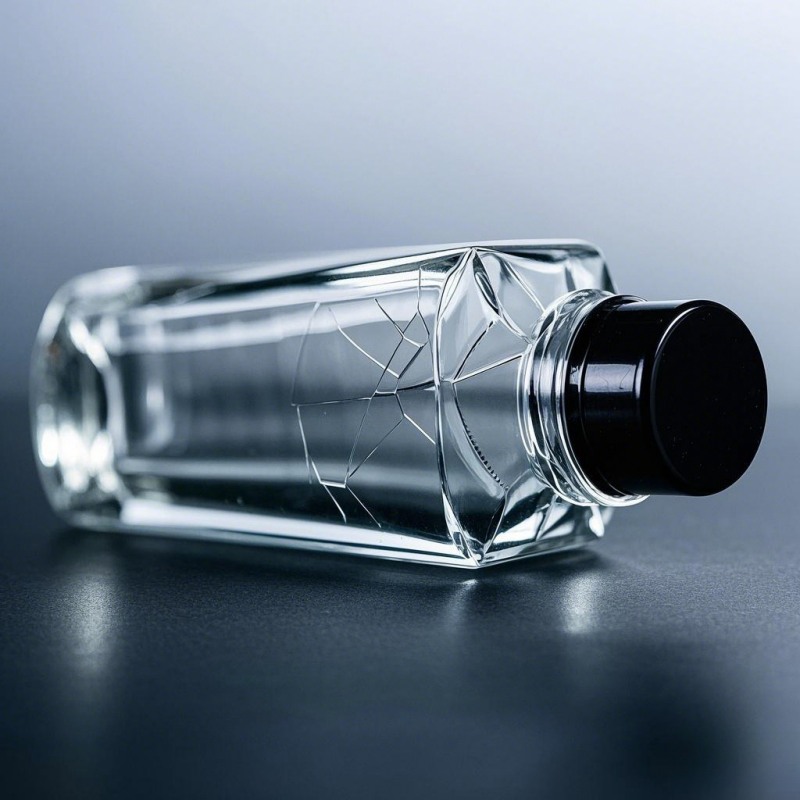
Im Glas eingebettete Fremdkörper, wie ungeschmolzener Sand oder feuerfeste Materialien, können entstehen:
Kontaminierte Rohstoffe
Unvollständiger Schmelzvorgang
Erosion der Ofenauskleidung
Auswirkungen: Ästhetische Mängel und potenzielle Schwachstellen, die die Wahrscheinlichkeit von Brüchen erhöhen.
Diese Mängel entstehen durch:
Reibung bei Transport oder Lagerung
Unsachgemäße Handhabung
Grober Kontakt mit Maschinenteilen
Auswirkungen: Geringere optische Attraktivität und mögliche strukturelle Schäden im Laufe der Zeit.
Probleme wie raue Oberflächen, falsch ausgerichtete Hälse oder ungeeignete Dichtungsoberflächen sind die Folge:
Fehlerhafte Formenkonstruktionen
Inkonsistente Glasverteilung während der Formgebung
Schlechte Beschneidungs- und Veredelungsverfahren
Auswirkungen: Undichte Stellen, unsachgemäßer Sitz des Verschlusses und geringere Kundenzufriedenheit.
Die Hersteller führen strenge Qualitätskontrollmaßnahmen durch, um Fehler zu minimieren und qualitativ hochwertige Glasbehälter zu gewährleisten. Zu den wichtigsten Strategien gehören:
Verbesserte Rohstoffauswahl: Verwendung hochreiner Materialien zur Minimierung von Verunreinigungen und Blasen.
Optimierter Betrieb des Ofens: Gewährleistung eines vollständigen Schmelzens und Raffinierens zur Vermeidung von Steinen und Einschlüssen.
Wartung von Schimmelpilzen: Regelmäßige Inspektion und Instandhaltung der Formen, um die Konsistenz zu erhalten.
Fortgeschrittene Umformtechniken: Anwendung präziser Form- und Kühltechniken, um dünne Wände und Risse zu vermeiden.
Oberflächenbehandlung: Anwendung von Beschichtungen oder Polierverfahren zur Verringerung von Kratzern und zur Verbesserung der Haltbarkeit.
Automatisierte Inspektionssysteme: Einsatz von Hightech-Inspektionsinstrumenten zur Erkennung und Beseitigung fehlerhafter Einheiten vor der Verpackung.
| Defekt Typ | Verursacht | Auswirkungen |
|---|---|---|
| Defekte der Blase | Verunreinigungen, unzureichendes Schmelzen, schlechte Chargenzusammensetzung | Ästhetische Mängel, schwache Struktur |
| Risse und Risse | Plötzliche Temperaturschwankungen, schlechtes Glühen, mechanische Belastung | Erhöhtes Bruchrisiko |
| Dünne/ungleichmäßige Wandstärken | Schlechte Formgestaltung, ungleichmäßige Glasverteilung | Strukturelle Schwäche, mögliche Brüche |
| Steine und Einschlüsse | Verunreinigte Rohstoffe, unvollständiges Schmelzen | Ästhetische Probleme, Schwachstellen |
| Kratzer und Abschürfungen an der Oberfläche | Reibung, unsachgemäße Handhabung, rauer Maschinenkontakt | Geringere Haltbarkeit und Attraktivität |
| Versiegelung und Oberflächenfehler | Fehlerhaftes Design der Form, uneinheitliche Glasverteilung | Undichtigkeit, unsachgemäßer Sitz des Verschlusses |
Das Verständnis und die Behebung von Qualitätsmängeln bei Glasbehältern ist für die Wahrung der Produktintegrität, der Ästhetik und der Kundenzufriedenheit unerlässlich. Durch die Einführung robuster Qualitätskontrollmaßnahmen und kontinuierlicher Verbesserungen im Herstellungsprozess können Unternehmen die Produktion hochwertiger Glasbehälter sicherstellen, die den Industriestandards entsprechen.
Unabhängig davon, ob Sie als Hersteller oder als Marke nach zuverlässigen Verpackungslösungen suchen, kann die Zusammenarbeit mit erfahrenen Lieferanten, die über strenge Qualitätssicherungsprozesse verfügen, den Erfolg Ihres Produkts auf dem Markt erheblich beeinflussen.
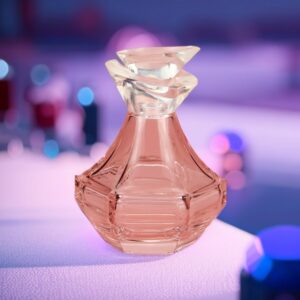
Verbessern Sie Ihr Verpackungsdesign mit Verpackungsmaterial aus Glas. Erfahren Sie in unserem informativen Leitfaden, wie Sie einen matten Look erzielen.
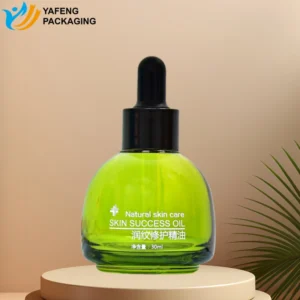
Entdecken Sie, wie die Sprühbeschichtung Hautpflege- und Parfümverpackungen aufwertet, indem sie das Erscheinungsbild, die Markenidentität, die Haltbarkeit und die Sicherheit mit fortschrittlicher Technologie verbessert.

Haben Sie sich schon einmal gefragt, wie lange Ihr Parfüm hält? In diesem Leitfaden erfahren Sie mehr über die Haltbarkeit von geöffneten und ungeöffneten Parfums, über Faktoren, die die Langlebigkeit beeinflussen, und über Tipps für eine längere Haltbarkeit!
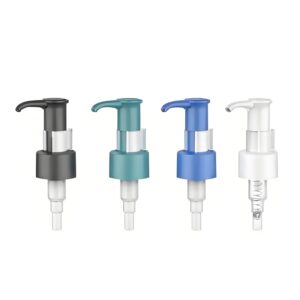
Erfahren Sie alles über Lotionpumpen für Kosmetikverpackungen: Aufbau, Typen, Funktionsprinzipien, Beschaffungstipps und Qualitätskontrolle. Ein wichtiger Leitfaden für Lieferanten.
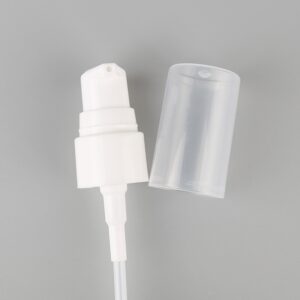
Einstoffpumpen aus Vollkunststoff revolutionieren die Kosmetikverpackung mit umweltfreundlichen, kostengünstigen und recycelbaren Designs, die Nachhaltigkeit und Markenattraktivität fördern.

Entdecken Sie, wie die Sprühbeschichtung Hautpflege- und Parfümverpackungen aufwertet, indem sie das Erscheinungsbild, die Markenidentität, die Haltbarkeit und die Sicherheit mit fortschrittlicher Technologie verbessert.
Informieren Sie sich über individuelle und Standardflaschen für Hautpflegeverpackungen. Erfahren Sie in diesem ausführlichen Leitfaden, wie die Lösungen von Yafeng die Markenidentität, Qualität und Effizienz steigern.
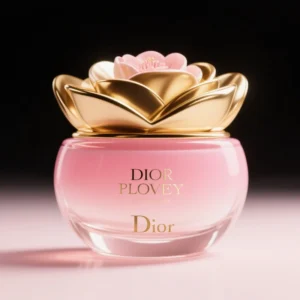
Entdecken Sie, wie Farbverlaufsspray kosmetische Glasflaschen verwandelt, das Markenimage verbessert und die Produktattraktivität steigert - mit Expertenwissen von Yafeng Packaging.
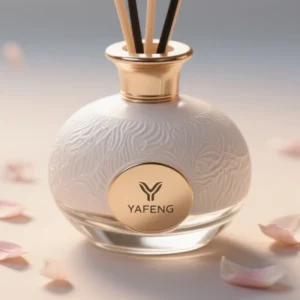
Entdecken Sie, wie die Rattan-Aromatherapie funktioniert und warum Glasflaschen die beste Wahl für einen lang anhaltenden Duft, Sicherheit und eine nachhaltige, elegante Verpackung sind.

Entdecken Sie die 10 besten Hölzer für Parfümkappen und vergleichen Sie Beschaffenheit, Vor- und Nachteile sowie den Preis, damit Sie das beste Material für eine stilvolle, hochwertige Verpackung wählen können.

Informieren Sie sich über kosmetische Glasflaschen - Sicherheit, ökologische Vorteile, Typen, Färbung, Formkosten, MOQ und Produktionstipps - in einem sachkundigen, datenreichen Leitfaden.
Schicken Sie uns eine WhatsApp-Nachricht